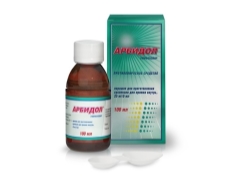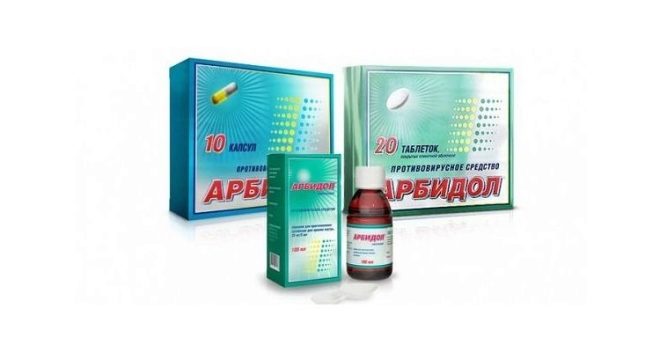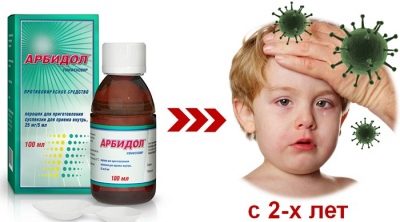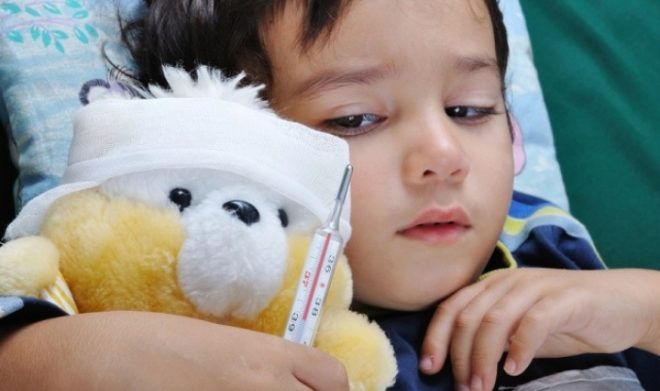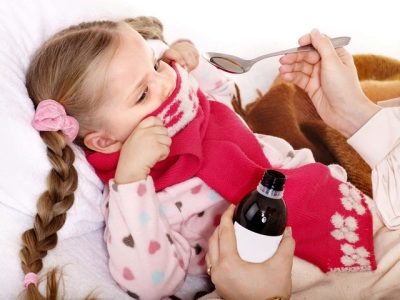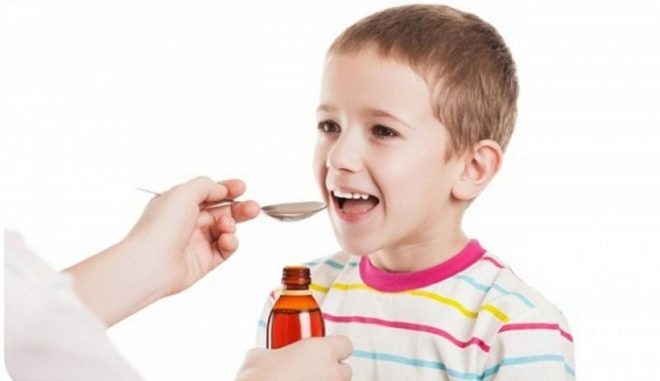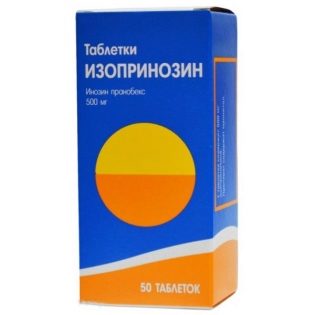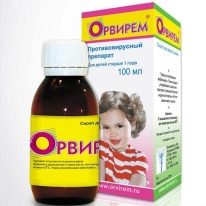Suspension "Arbidol Children": instructions for use
For the treatment of viral diseases, doctors prescribe drugs that can directly affect viruses. One of these drugs is Arbidol from the Russian company Pharmstandard-Leksredstva. Especially for children, it is produced in the form of a sweet suspension, which is easy to dose for babies. At what age is it permissible to use this medicine and how to give it to a child correctly?
Release form
Suspension Arbidol is produced in dark glass bottles with a capacity of 125 milliliters, inside of which there is 37 g of powder - a white granular substance with a fruit flavor. After dilution, it forms a white suspension with a cream or yellow tinge that smells like fruit. The bottle has a label indicating the level of 100 ml. Instructions and measuring spoon are attached to the bottle.
Arbidol is also produced in solid form - in gelatin capsules of yellow or white color and in coated white film-coated round tablets. Such drug options contain 50 or 100 mg of the active ingredient. In addition, there is the drug Arbidol Maximum, which is a capsule with 200 mg of active substance.
Composition
The main substance in suspension, Arbidol, which provides antiviral effect to this preparation, is represented by umifenovir hydrochloride in the form of a monohydrate. Its content in 5 ml of the finished drug is 25 mg. Additionally, the drug contains silicon dioxide, starch, sodium chloride and sodium benzoate. For a sweet taste, sucrose, sucralose and maltodextrin have been added to the preparation, and cherry and banana flavors give a pleasant smell to the medicine.
Operating principle
Umifenovir in the composition of the drug is able to suppress the activity of such pathogens:
- Influenza viruses, including high pathogenic subtypes.
- Coronaviruses.
- Rhinoviruses.
- Adenoviruses.
- Viruses that cause parainfluenza.
- Respiratory syncytial viruses.
Reception of Arbidol interferes with the fusion of viruses with cell membranes. In addition, this medicine activates the production of interferon and stimulates the cellular response to infection with viruses. Under his influence, the number of lymphocytes increases (especially T-helper cells and natural killer cells), and macrophages more actively perform their phagocytic function.
In a sick child, this effect of the drug is manifested by a decrease in the severity of the viral infection and a decrease in its duration. In addition, due to the use of Arbidol in suspension, the incidence of complications of an infectious disease is reduced.
Indications
Suspension prescribe:
- For the prevention or treatment of influenza and other acute respiratory viral infections.
- As a means of complex treatment of rotavirus enteritis.
- For the prevention or treatment of pathology SARS provoked by coronaviruses.
The drug is prescribed at the first signs of intoxication, when the temperature of the child’s body has risen more than to +380 ° C. The sooner treatment is started, the greater will be its effect.
At what age is it allowed to take?
Arbidol in liquid form is contraindicated for children of the first two years of life. In this case, in children over 2 years old, the instruction recommends that the flu, rotavirus or ARVI be treated with this agent.With SARS infection, the drug is used to treat children over 12 years old, and for prophylactic purposes in children over 6 years old.
Solid forms of Arbidol are allowed for children over three years old, provided that the baby can swallow them without any problems. If there are problems with this, at the age of 3 years and older continue to give the child the medicine in suspension. The drug Arbidol Maximum is given to children only from 12 years of age due to increased dosage.
Contraindications
Arbidol in suspension is not prescribed to children who have identified intolerance to umifenovir or any other ingredient of the drug. Since the composition of this form of the drug includes simple carbohydrates, the drug should not be taken in children with glucose-galactose malabsorption, lack of isomaltase, fructose intolerance or deficiency of sucrase. In addition, the presence of sucrose should be taken into account when assigning a suspension to a child with diabetes.
Side effects
Sometimes a child’s body reacts to Arbidol through allergic reactions such as urticaria, skin rashes, angioedema, or pruritus. Anaphylactic reaction to the reception of the suspension is very rare.
Instructions for use and dosage
Suspension is taken before meals. To prepare the medicine, add about 30 ml of water to the powder or fill the bottle with water for 2/3 of its volume. Water for the preparation of the solution should be brought to a boil, and then cooled. During mixing with the powder, it should be at room temperature. After pouring the water inside and closing the bottle with the lid, you need to turn the bottle upside down and then shake it thoroughly several times to make the medicine uniform.
Having added inside the bottle of still boiled water to the mark, which corresponds to 100 ml of liquid, the bottle is closed again and shaken again. Careful agitation of the suspension is also required before each administration of the preparation so that the syrup taken is homogeneous. For dosing it is recommended to use the measuring spoon, which the manufacturer attaches to the bottle.
A single dosage for a child is determined depending on his age:
- Children 2-6 years give 10 ml of medication per dose, which corresponds to 50 mg of umifenovir.
- A child between the ages of six and 12 requires at one time 100 mg of the active substance, so he is given 20 ml of suspension.
- A child older than 12 years should drink 40 ml of the drug, that is, at one time he will receive 200 mg of umifenovir. Since at this age you need to immediately swallow 8 measuring spoons of medication, it is better to switch to taking solid forms with a higher dosage.
The mode of administration of the suspension depends on the purpose for which the medicine is taken:
- If the drug is prescribed for prophylaxis during the season of ARVI epidemics, then it should be given to the child 3 weeks twice a day.
- If the baby was in contact with a person who has flu or another acute respiratory viral infection, the suspension is prescribed a course of 10-14 days. In this case, the drug should be drunk only once a day.
- With flu or other viral infections of the respiratory tract, if there are no complications, the medicine is taken every six hours. Such a fourfold intake is prescribed for 5 days.
- When infected with rotavirus, a child over 2 years old is also given the drug four times a day, for five days.
- In order to prevent SARS syndrome in a child over 6 years old, the suspension is given 1 time per day with a course of 12 to 14 days. For the treatment of such an acute pathology, a child over 12 years old is prescribed a double dose of Arbidol, and the duration of therapy is 8 to 10 days.
If the child misses taking the medicine, take the missed dose of the suspension as soon as it was discovered. Further treatment is continued according to the scheme prescribed by the doctor.
Overdose and drug interactions
There are no data on the negative effect of a high dose of the suspension on the child's body, as well as on the incompatibility of the drug with other medications, in the annotation to the drug.
Terms of sale
Arbidol powder is a non-prescription drug and is sold in most pharmacies in our country. The average price of one bottle of this medication is 300 rubles.
Storage conditions and shelf life
Undiluted powder must be kept out of the reach of children until its expiration date, which is 2 years. Keep unopened bottle should be at a temperature below +25 degrees Celsius. As soon as a suspension is prepared from the medicine, such a liquid form should be used within 10 days, and storage should be in the refrigerator (at a temperature below +8 degrees). It is impossible to freeze such liquid medicine.
Reviews
Many mothers speak positively of the suspension, noting that the use of Arbidol from the first days of the disease helped their children in the fight against the common cold and other symptoms of ARVI, and the period of elevated temperature during the treatment with this medicine was shortened. In addition, the use of the suspension reduced the risk of complications of the flu.
Parents praise this form of medicine for a pleasant taste and ease of dosing. Moms also like that the remedy is a good prevention of viral infections during the cold season. As for the minuses, many parents attribute the short shelf life of the finished suspension to them. In addition, there are complaints about the inefficiency and high cost of the drug. Some mothers are afraid to give it to the child, confusing it with antibacterial drugs or not trusting the manufacturer.
Analogs
Arbidol can be replaced with one of these antiviral drugs after consulting a doctor:
- Orvirem. This syrup containing rimantadine is used in the treatment of children older than a year.
- Amiksin. The basis of such tablets in the shell is tilaran. The drug is prescribed to children from 7 years of age.
- Amizonchik. This antiviral syrup is used in the treatment of children 3 years and older. The drug is also released in tablets Amizon, but they can not be given up to 18 years.
- Isoprinosine. These inosine-based tablets are approved in pediatrics from the age of three.
- Kagocel. This antiviral drug in pills is prescribed for children over 3 years old.
- Ingavirin. Such capsules can be given with SARS and flu to a child over 13 years old.
In addition, in the treatment of acute respiratory viral infections or for the prevention of such diseases in childhood, the pediatrician may prescribe interferon drugs, for example, Viferon or Grippferon. Also, some parents decide to give homeopathic remedies to a child with a viral infection (Anaferon, Oscillococcinum, Aflubin, Erhoferon), but most doctors consider them ineffective and do not advise using them to replace Arbidol.
And now we suggest you to look at the release of Doctor Komarovsky about children's antiviral, and to find out his competent opinion on this issue.
